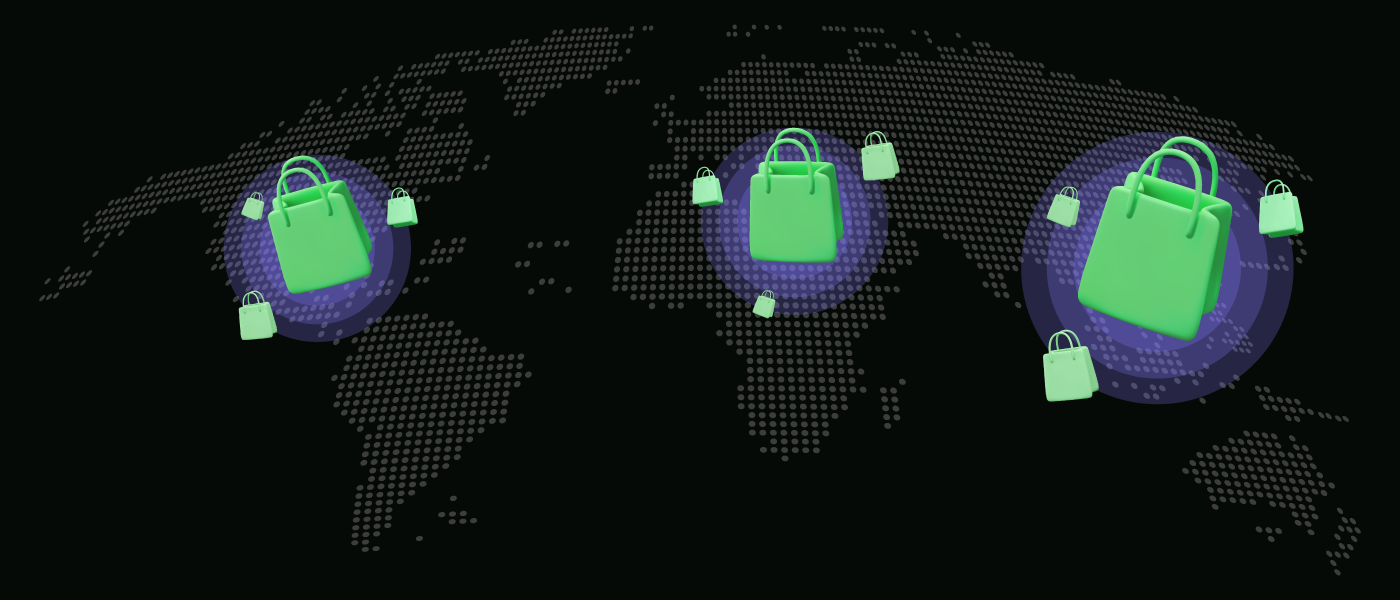The problem with this approach is that we can end up creating tunnel-vision around last-mile delivery. Businesses start to care only about their last mile, and logistics partners focus more and more on creating an optimal last mile in order to satisfy these businesses.
The last mile is the most expensive part of the fulfillment process, and optimizing it is a great way to reduce unnecessary spending. Despite optimizations, with shoppers getting more and more used to demanding free shipping, there is still a large hit that businesses are expected to take when it comes to shipping costs.
When faced with these issues, businesses should ask themselves this: why should I focus mainly on my last mile? After all, there’s an entire logistics chain that precedes it that can be optimized just as much. Since logistics is often taken care of by a third party, it’s easy for the entire process to slip into the shadows and for businesses to forget that there are other things to work on than their last mile.
Start at The Beginning
The best place to start is at the beginning of the chain: the first mile. Think of your logistics chain as a reverse-funnel: as you go forward through the process, things become more and more complex, with the last mile being by far the most difficult. It’s best to make sure you have a proper foundation for the reverse funnel so that things don’t get out of control too early in the process for you to handle. Also, since your first mile is at the bottom of the reverse funnel, its impact on your last mile will be greater than your last mile’s impact on your first mile. Delays and inefficiencies that occur during the first steps will always have negative consequences on your final steps. So, even if your main focus is your last mile, you should still tend to the earlier stages of the process because they will positively impact your last mile anyway. In other words, optimizing the first mile is optimizing the last mile!
Starting from the first step is also a great way to diagnose the issues with your logistics chain. If you’ve put most of your effort into your last mile but things aren’t running as well as they should be, it’ll be hard for you to pinpoint exactly where things are going wrong. Starting from the bottom, where things are less chaotic, and going up the chain carefully is a great way to make sure your foundations are solid, which will help you better know exactly where your process is lacking.
So let’s get started on optimizing your first mile.
Understanding first mile Through the last mile
Even though the two steps are at opposite ends of the supply chain, that doesn’t mean they are totally different. Since most businesses know more about last-mile optimization than first-mile optimization, a great way to get started is to apply the lessons learned from last mile to the first mile. What you’ll see is that the two steps share a lot in common. At the end of the day, they’re both about moving stuff around.
The first similarity is the most obvious one: both the first and last mile are steps that require fast and accurate moving of materials and products from place to place. For your first mile, this usually means from your source to some other place, and for last-mile, this typically means from a warehouse to a customer’s doorstep.
The second is that cost-effectiveness is of utmost importance. It shouldn’t matter whether it’s at the end or the beginning of the process. Both steps should strive to maximize their efficiency so that you’re not wasting money on either step.
The third similarity is that both steps can benefit from human error reduction. Human error is one of the biggest issues when it comes to logistics, being responsible for most problems and delays that occur over the course of the fulfillment process. Streamlining workflows and making use of automation is a great way to reduce human error at every step of the process, whether first- or the last mile.
The advantages you get from optimizing each step are also similar. At the end of the day, optimization is getting more out of each dollar you spend on fulfillment. If you can minimize fulfillment costs then you’ll be increasing profits or you can reduce prices elsewhere and increase sales and competitiveness.
While first and last-mile both seek similar things and benefit your business in similar ways, they aren’t identical. One key difference between the two is how and where optimization occurs. Last mile optimization is more about creating a smooth relationship between the manufacturer and the logistics partners so that orders can go smoothly from your warehouses to your customers. first-mile optimization is more about coordinating all the bodies that are involved in production: from raw materials to processing to packaging. Each of these bodies also must be interconnected by a logistics network that allows for final products to reach your warehouses and storefronts.
In this regard first- and last mile are almost opposites. last mile typically has centralized products being spread out and delivered to numerous locations, whereas first mile is more about bringing products together to a centralized location from distinct bodies.
Starbucks’s coffee supply chain is the best example of this. Different elements that go into creating a cup of coffee are sourced from all over the world, centralized into a storefront, and then spread out across the customers.
What to Know About first mile Before Optimizing
So what should your approach be to optimizing first mile in a way that is different than your last mile strategy? We think that there are three things you need to understand about first mile to get started with optimizing it:
1. Who is Part of The Process?
first mile has many more actors involved than last mile’s manufacturer-logistics relationship. Typically your average order will involve 6 business entities (suppliers, processing factories, etc.) and 9 departments (planning, distribution, etc.). Maintaining a smooth line of communication between all these different bodies is much harder than it is for your last mile. Communication breakdowns will cause everything to slow or even shut down, as each body relies on everyone else to do their part smoothly in order to maintain a regular and predictable schedule.
2. What processes are at work?
How do all these bodies communicate? Things can get very complicated because very often these bodies are each their own business, working with their own unique network of clients and partners, using their own means of communication, logistics, and even have their own lingo. A lot of the time there is no standard procedure that all members of the process follow, and people just get things done through over-communication and way too much paperwork. Managing to create a process that streamlines communication between each of these bodies is a great place to start. It may be difficult, however, because if businesses adopt a unique mode of communication for each client or partner they have, they can quickly get overwhelmed with the different software, platforms, and procedures they need to use on a daily basis.
3. What tools are used?
Manual bookkeeping and data entry is still the standard despite all the technological solutions we have at our disposal. If last mile is slowed down by manual administrative work, then just as much is true about first mile. If anything, first mile is slowed down even more, because of all the different bodies that are working together.
Where to start?
At Locad, we focus on the entire fulfillment chain. If optimizing last mile was already difficult, and first mile sounds overwhelming, you shouldn’t worry. We work on each step of the fulfillment process and specialize in figuring out what solutions fit best with your business and your aspirations. Get started with us today.











